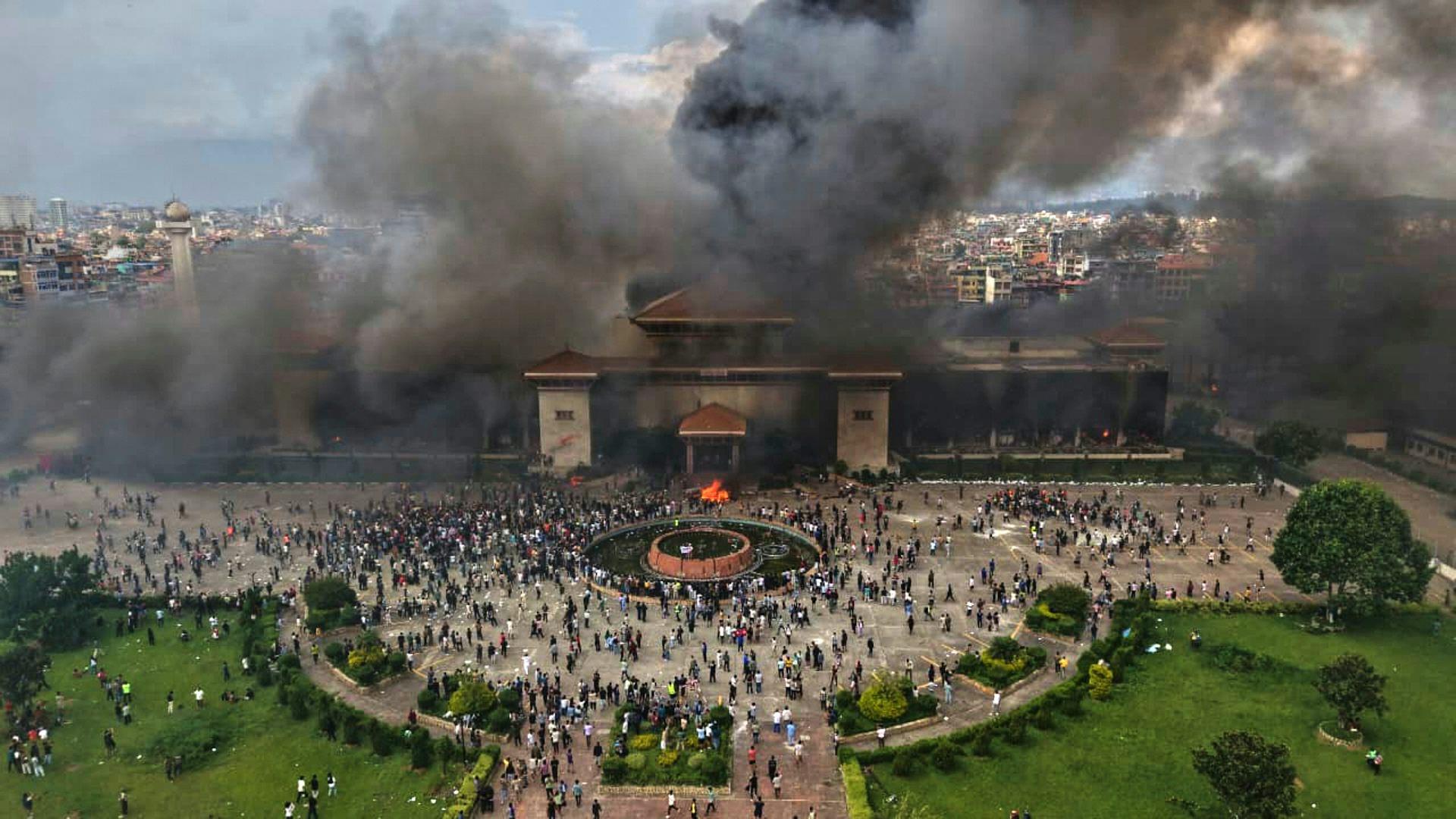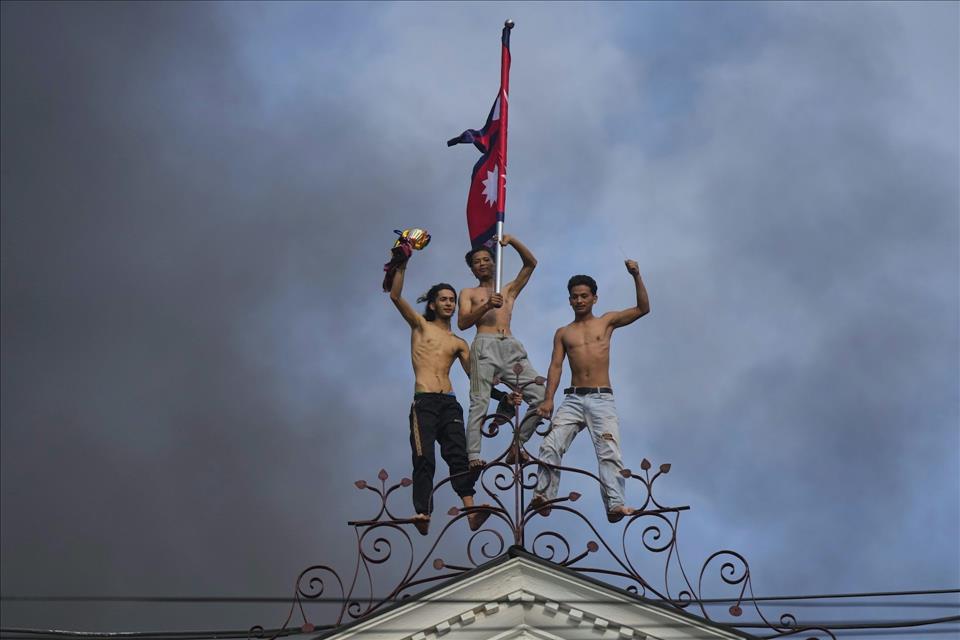
Gen Z Protests Brought About Change In Nepal Via The Powers - And Perils - Of Social Media
The Gen Z movement represents a turning point for Nepal politics. The protesters had three key demands: end corruption, end nepotism and reform the country's political systems.
Their uprising led to the resignation of Prime Minister K.P. Sharma Oli and several government ministers. Sushila Karki was then appointed interim prime minister , and the protests have since died down.
Why is the Gen Z protest unique?Nepal's Gen Z movement is different from other movements in Nepal.
First, it is led by young people. Second, social media is their main means of communicating their dissent and their agenda.
These protesters are angry that working-class young people are struggling to meet basic everyday needs (food, shelter, jobs, health care, etc.) and facing rising inequality, discrimination and poverty.
That's in contrast to the children and grandchildren of Nepal's high-profile elite politicians, accused by the protesters of living in the lap of luxury. Gen Z protesters have demanded information about the source of income of Nepal's ultra-rich politicians and their families , and called for a thorough investigation.
A segment on how Nepal's Gen Z protesters targeted #nepokids. (Sky News) Why are Gen Zs so frustrated?
For a long time, Nepal, with a population of 29.5 million, has been trapped in a poverty cycle. It is ranked 143rd globally in the Human Development Index (2024).
The unemployment rate in 2024 for youth aged 15-24 was 20.82 per cent , and it's growing . Reports also suggest that more than 1,500 adults leave the country every day in search of work.
In 2021, the Nepal census found that 7.1 per cent of the population was working outside the country and has a median age of 28.
In 2023, Nepali workers sent remittances of US$11 billion back home . In fact, estimates suggest that almost 25 per cent of Nepal's GDP is from remittances .
There is also growing concern about Nepali worker deaths as people take dangerous jobs; more than 700 workers died from 2018 to 2019 Gen Z frustrations are linked to how their parents leave the country in search of work and do the most high-risk and lowest-paid jobs abroad , which they believe is in stark contrast to the lives of #NepoBabies and #NepoKids.

Protesters in Nepal celebrate at the parliament building after it was set on fire during a protest against a social media ban and corruption in Kathmandu, Nepal, on Sept. 9, 2025. (AP Photo/Prakash Timalsina) Gen Z's digital tactics
Some Gen Z social media users tracked the accounts (on Instagram, TikTok and Facebook) of the children and grandchildren of ultra-rich politicians and shared or reposted images and videos of their luxurious lifestyles .
That included photos taken on high-end vacations in Europe, shopping for designer brands like Louis Vuitton, Prada, Gucci and Cartier, as well as their stays in family properties worth billions.
Social media engagement surged on posts with these images and with hashtags that included #Nepobaby , #NepoKids, #PoliticiansNepoBabyNepal and #Corruption.
Some Gen Zs also made short videos on TikTok and Facebook highlighting corruption, inequality, poverty and nepotism; those videos also went viral.
All of these issues resonated with many Nepali Gen Zs, spurring them to join the protest movement .
Social media banBefore Sept. 8, Gen Z's protests were peaceful and mostly took place online. But when the government instituted a ban on social media , Gen Z erupted, with many claiming that the decision was aimed at silencing their voices.
Gen Z is the social media generation , and the ban was regarded as a violation of their rights. They soon took their demands to the streets from the screen, calling for the resignation of the prime minister.
The protest turned into a battlefield as police killed 19 school-aged students on the same day; hundreds were also injured. As of now, the Gen Z protester death toll is 72 .
People light candles in memory of victims killed during the anti-corruption protest in Nepal in front of parliament buildings in Kathmandu on Sept. 17, 2025. (AP Photo/Niranjan Shrestha) Aftermath
The prime minister resigned on Sept. 9 , but the situation further worsened. Protesters burned down key government buildings, including parliament and court buildings, private businesses, banks and the homes of politicians and business people across the country.
Nepal's new Prime Minister Sushila Karki greets ministers at the presidential building in Kathmandu, Nepal, on Sept. 15, 2025. (AP Photo/Niranjan Shrestha)
After a series of talks between the chief of the Nepal army, Ashok Raj Sigdel, Nepali President Ram Chadra Poudel and Gen Z leader Sudan Gurung , an interim six-month government was formed. Karki was appointed the first female prime minister of the country.
The interim cabinet's priorities include the upcoming election in March 2026, tackling corruption, investigating the killings of Gen Z protesters as well as the destruction of public and private property.
The power and perils of social mediaBefore the Nepal protests, dissenting youth in countries that include Bangladesh , Sri Lanka and Myanmar have used social media to air their grievances.
A study has shown how social media plays a role in empowering youth , amplifying marginal voices and building transnational solidarity. Examples include some of the most popular global social movements like #BlackLivesMatter, #MeToo, #MahsaAmini.
Read more: A year after Mahsa Amini's death, Iran's women continue their long fight for 'women, life, freedom'
But its role in protest movements can also be problematic.
Amid the Gen Z protests in Nepal, reports of disinformation and misinformation are spreading. A video claiming 35 human skeletons were found in a store was posted on Sept. 13 by a Facebook user with 63,000 followers, fuelling panic among the protesters. The claim was determined to be false.
Gen Z protesters in Nepal and beyond are clearly having some success in bringing about social and political change. But with the growth of artificial intelligence, creating fake content is no longer difficult, and false information can proliferate quickly amid this generation.

Legal Disclaimer:
MENAFN provides the
information “as is” without warranty of any kind. We do not accept
any responsibility or liability for the accuracy, content, images,
videos, licenses, completeness, legality, or reliability of the information
contained in this article. If you have any complaints or copyright
issues related to this article, kindly contact the provider above.


















Comments
No comment